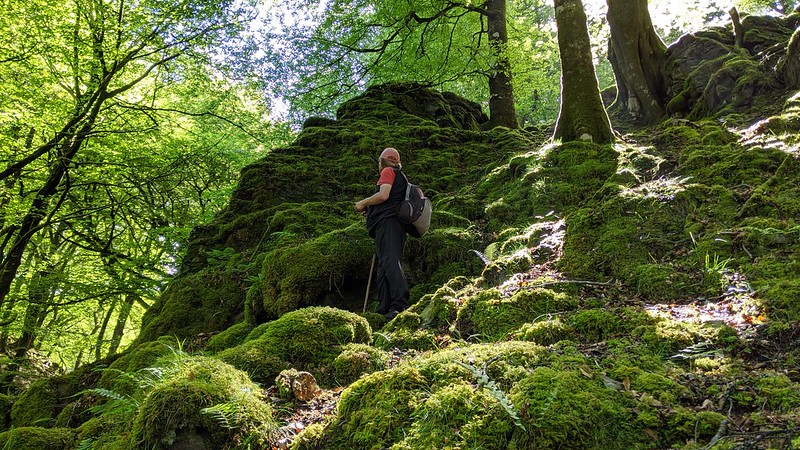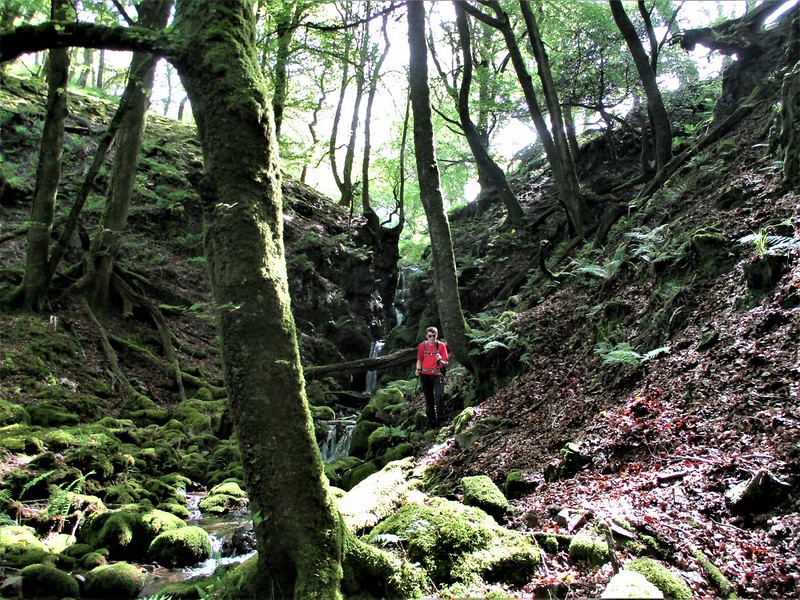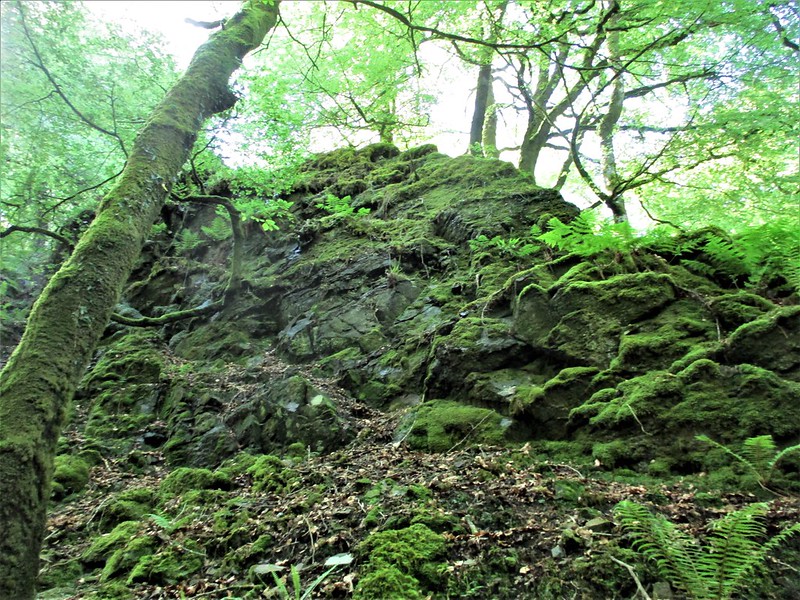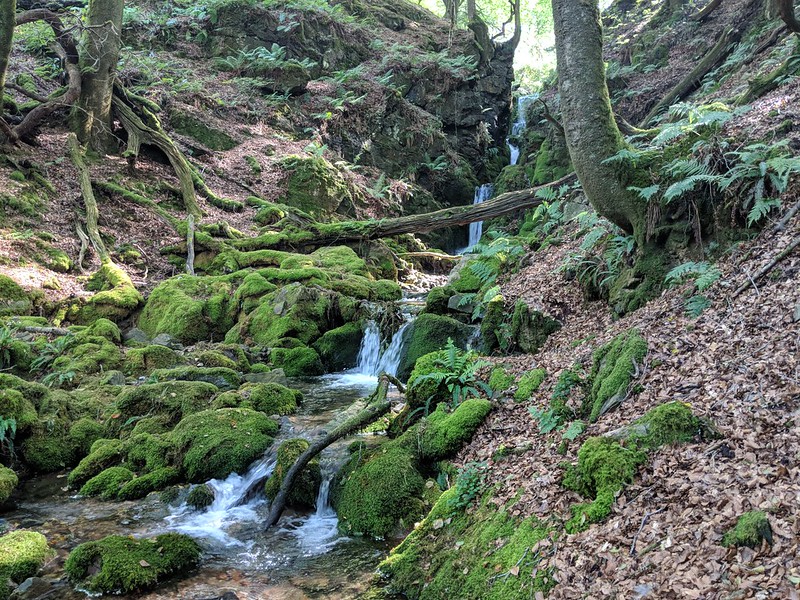TORS OF DARTMOOR
a database of both lesser- & well-known rocks and outcrops
Combe CragsHawns and Dendles Gorge
 The edges of the high moor see river valleys steepen and mature as they plunge into the depths of woodland and progress alongside agricultural fields. On the brink of the South Moor, about 1 and a half miles to the north of Cornwood, lies Dendles Wood Nature Reserve, a place that flourishes in unique mosses and wildlife. The woodland is the site of the meeting place of the Combe Brook, Ford Brook and Broadall Lake that discharge into the Yealm.  Just above the confluence of the Combe Brook with the River Yealm is a stupendous waterfall, a sheet of water that tumbles over moss-coated boulders in a narrow cleft. The banks are draped by ferns, leaves and angular rock evoking a scene of romance. Either side of this striking feature, but particularly the east, are huge metamorphic crags of dark slate that precariously hang above the brook. This breathtaking stretch of Yealm Country is known as Hawns and Dendles Gorge and was captured by William Crossing (1905) in Gems in a Granite Setting where he writes: "Bye-and-bye the melody of the river gives place to a louder sound, and when the descending path brings the rambler to its bank he sees in front of him a gleaming cascade. Here, pouring over the rocks, the Yealm comes down from the Moor, pressing impetuously forward as though eager to look upon the beauties in the valley."  Despite the appeal of the waterfall, little regard has been given to the crags that rear up from the valley-floor. These were christened 'Combe Crags' by Max Piper and Paul Rendell for want of an identity and that name subsequently appeared in Dartmoor News issue 177 in early 2021. The magnificence of the place is so well concealed by the hills of Hawns and Combe that sunlight struggles to reach through the trees, and consequently the area is noticeably damp and slippery, so care is to be taken when you visit.  It was once thought that Dendles Wood could only be accessed through the adjacent Dendles Waste to the north-west or the open moorland below Stall Down to the north-east, however, there is a permissive path from the road bend at Hele Cross (SX 61315 61036) that enables much simpler access from the south; passing Higher (or North) Hele, it takes you to a gate and an information board that gives you facts about the biodiversity as well as a plan of the reserve denoting ownership boundaries. A good network of footpaths and tracks thread through Dendles Wood utilising sturdy footbridges, and when visiting Combe Crags it is encouraged that you take the path from the south by two footbridges at the aforementioned convergence to enter the confines of this special gem. Please note that Combe Crags lie within land owned by Natural England, and they politely ask that visitors contact their offices at Yarner Wood in advance to seek formal permission to access this reserve.
| ||||||||||||||||||||||||||||